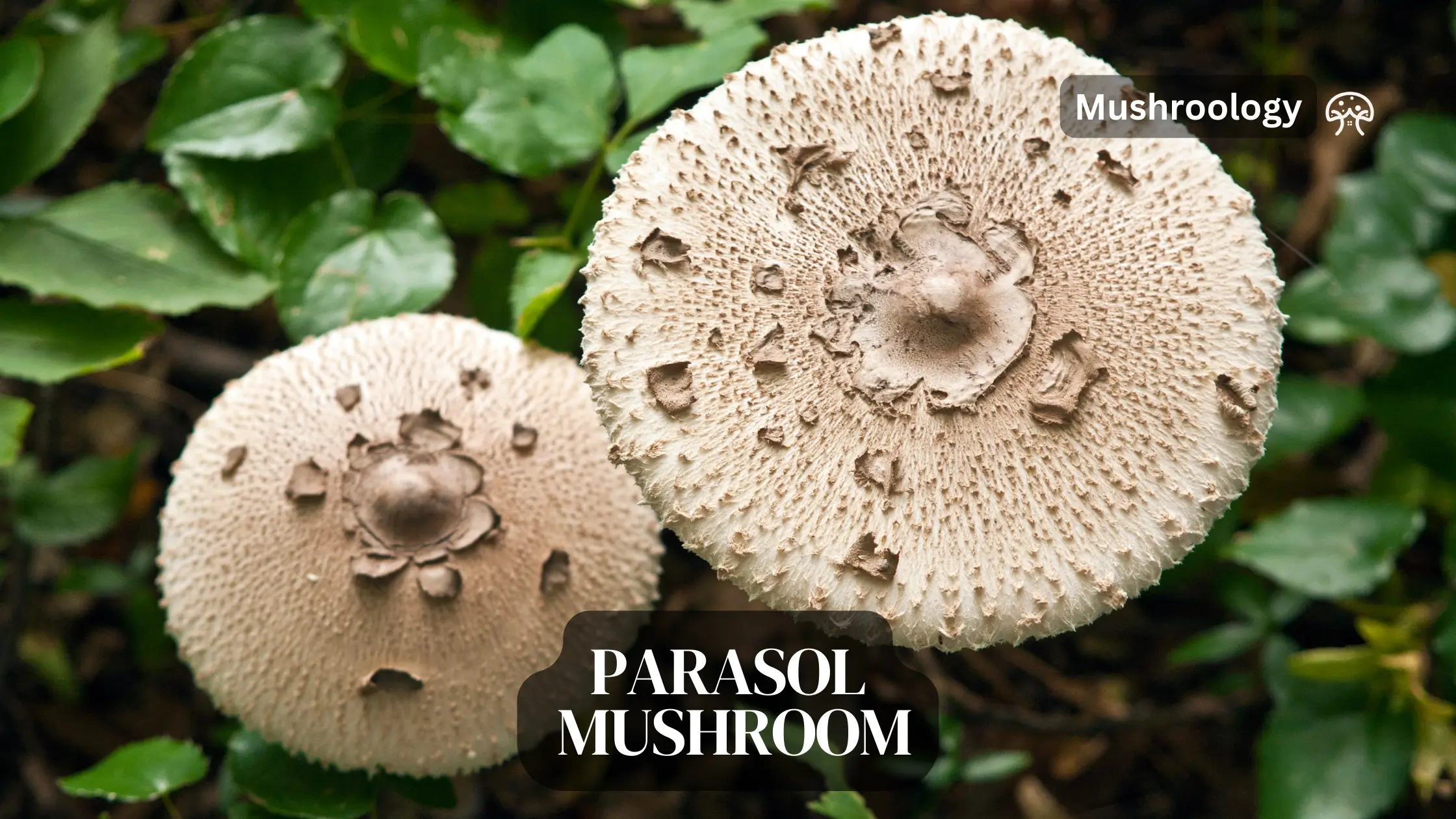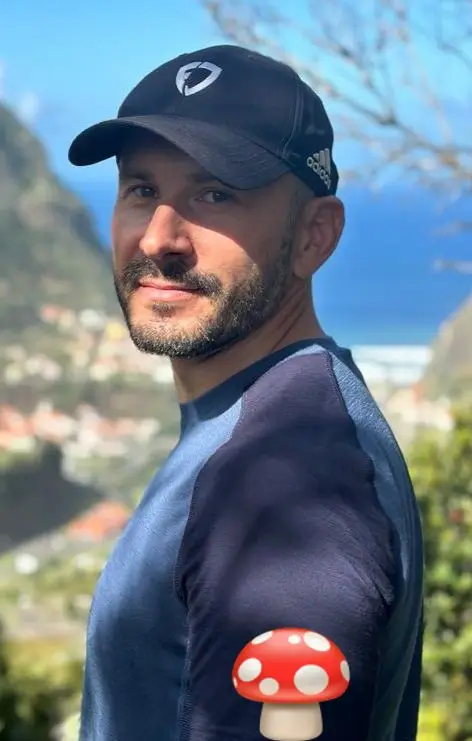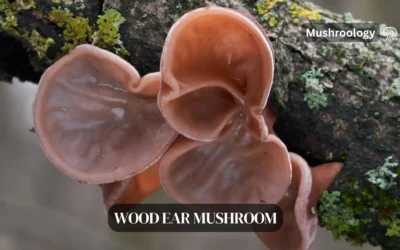Let’s be real here – parasol mushrooms (Macrolepiota procera) are one of the trickiest mushrooms to grow at home. Unlike oyster or shiitake mushrooms that you can grow in bags, parasol mushrooms need outdoor soil and a lot of patience. But if you’re up for the challenge, I’ll show you exactly how to do it.
What are parasol mushrooms?
Parasol mushrooms are those huge mushrooms you see in fields that look like, well, parasols. They can grow up to 12 inches tall with caps spreading 8-10 inches wide. They’re absolutely delicious – kind of nutty and meaty – but here’s the thing: they’re mycorrhizal mushrooms, which means they need to form relationships with plant roots to grow properly.
Quick facts about parasol mushrooms:
- Growing season: Early summer through late fall
- Time to first harvest: 6-12 months (sometimes longer)
- Growing difficulty: Advanced
- Best location: Open grassy areas or meadows
- Temperature range: 60-75°F (15-24°C)
Why parasol mushrooms are challenging to grow
I need to be upfront with you – parasol mushrooms aren’t like growing button mushrooms in a kit. Here’s why:
- They’re mycorrhizal: They need living plant roots nearby
- Long establishment time: Can take 1-2 years before you see any mushrooms
- Unpredictable fruiting: Even when established, they fruit when they want to
- Space requirements: Need a decent-sized outdoor area
If you’re looking for quick results, honestly, try oyster mushrooms instead. But if you’ve got patience and outdoor space, let’s do this.

What you need to grow parasol mushrooms
Essential supplies
Here’s what you actually need (not what some articles claim):
Must-haves:
- Parasol mushroom spawn (grain or sawdust spawn) – $30-50
- Outdoor garden space (at least 10×10 feet) – free if you have it
- Grass seed or existing lawn – $10-20
- Organic compost – $20-30
- Water source for dry periods
Optional but helpful:
- Shade cloth for extreme heat – $20-40
- Mulch for moisture retention – $20-30
- pH test kit – $10-15
Where to buy parasol mushroom spawn
This is the tricky part. Parasol mushroom spawn isn’t as common as other varieties. You’ll need to:
- Check specialty mushroom suppliers online
- Look for “Macrolepiota procera” specifically
- Expect to pay more than for common mushroom spawn
- Order in spring for best results
Setting up your parasol mushroom patch
Parasol mushrooms grow naturally in meadows and grassy areas, so that’s what we’re trying to recreate. Look for:
- Open areas with grass or plan to plant grass
- Partial shade is okay but not deep shade
- Good drainage – they hate waterlogged soil
- Away from trees – remember, they prefer meadow conditions
- Protected from strong winds – those tall stems can snap
Preparing the growing area
This isn’t like preparing a regular garden bed. Here’s what actually works:
- Choose your timing: Best done in spring or early fall
- Don’t till deeply: Just rough up the top 2-3 inches of soil
- Mix in compost: Work in a thin layer of finished compost
- Check pH: Parasol mushrooms prefer slightly alkaline soil (7.0-7.5)
The parasol mushroom growing process
Method 1: Direct soil inoculation (most common)
This is the most reliable method for home growers:
- Spread spawn: Scatter grain spawn over your prepared area (1 pound per 50 square feet)
- Lightly rake in: Just barely cover the spawn with soil
- Plant grass: If no grass exists, overseed with a grass mix
- Water gently: Keep moist but not soggy
- Wait: This is the hard part – it takes months
Method 2: Transplanting wild mycelium (advanced)
If you know where parasol mushrooms grow wild:
- Get permission: Always ask before digging on someone’s property
- Dig carefully: Take a shovelful of soil from near wild parasols
- Transplant quickly: Move to your prepared area within hours
- Water well: Keep the area moist for several weeks
- Cross your fingers: Success rate is maybe 50%
The waiting game with parasol mushrooms
Here’s what happens after inoculation:
Months 1-3: You’ll see nothing. The mycelium is spreading underground.
Months 4-6: Still nothing visible. Keep the faith.
Months 6-12: You might see your first mushrooms, or you might not.
Year 2+: If established, you should get regular flushes each year.
Seasonal care for parasol mushrooms
Spring:
- Check for early mushrooms
- Add a thin layer of compost
- Ensure good drainage after snow melt
Summer:
- Water during dry spells (once a week if no rain)
- Watch for mushrooms after summer rains
- Don’t mow when mushrooms are present
Fall:
- Peak fruiting season for parasol mushrooms
- Check every few days after rain
- Harvest promptly when ready
Winter:
- Leave the area undisturbed
- Mycelium is dormant but alive
- Plan for next year
Common problems growing parasol mushrooms
“It’s been a year and no mushrooms!” This is normal. Parasol mushrooms are slow. Keep maintaining the area and be patient. Some patches take 2-3 years to establish.
“Other mushrooms are growing instead” That’s actually fine! It means your soil is healthy. Just make sure you can identify parasol mushrooms correctly before eating anything.
“My parasol mushrooms grew but fell over” They’re top-heavy by nature. Next time, harvest a bit earlier or stake them if you want perfect specimens.
When to harvest parasol mushrooms
The timing is crucial for best flavor and texture:
- Cap still closed: Too early – wait a bit
- Cap just opening: Perfect for grilling whole
- Cap fully open but edges down: Ideal for most uses
- Cap flat or edges turning up: Getting old, use quickly
How to harvest parasol mushrooms properly
- Use a knife: Cut at ground level, don’t pull
- Leave the base: This helps the mycelium recover
- Harvest in morning: They’re freshest then
- Check for bugs: Slugs love these mushrooms too
- Process quickly: They don’t store well fresh
Using and storing parasol mushrooms
Cleaning parasol mushrooms
- Brush off dirt with a soft brush
- Don’t soak in water – they’ll get mushy
- Trim the tough stem base
- Check inside hollow stems for bugs
Cooking parasol mushrooms
These are seriously good eating:
- Grilled whole caps: Brush with oil, season, grill like a burger
- Breaded cutlets: Slice, bread, and fry like schnitzel
- Stuffed caps: Fill with herbs, cheese, breadcrumbs
- Dried: Intense flavor for soups and sauces
Storing your parasol mushroom harvest
Fresh storage:
- Paper bag in fridge: 3-5 days max
- Never in plastic – they’ll get slimy
Long-term storage:
- Dehydrate: Slice and dry at 125°F
- Freeze: Cook first, then freeze
- Pickle: Great for preserving texture
Frequently asked questions
Can I grow parasol mushrooms indoors? No, they need outdoor soil and likely plant root associations. This isn’t like growing oyster mushrooms in a bucket.
How many parasol mushrooms will I get? Varies wildly. An established patch might produce 10-50 mushrooms per year, or just a few. Nature decides.
Are parasol mushrooms hard to identify? They’re fairly distinctive, but always verify with multiple sources or an expert before eating any wild or homegrown mushroom.
What’s the difference between parasol mushrooms and false parasols? Several look-alikes exist. True parasols have a distinctive snake-skin pattern on the stem and a moveable ring. When in doubt, don’t eat it.
Can I speed up parasol mushroom growth? Not really. They grow on their own schedule. Extra watering or fertilizer won’t make them fruit faster.
Is growing parasol mushrooms worth it?
Let’s be honest – if you want easy mushrooms, grow oyster or shiitake mushrooms instead. But if you:
- Have outdoor space
- Enjoy long-term garden projects
- Want something unique
- Have patience
Then absolutely give parasol mushrooms a try. When that first mushroom pops up after a year of waiting, it’s magical. Plus, once established, they can produce for many years.
Your next steps for growing parasol mushrooms
Ready to try? Here’s your action plan:
- Find a spawn supplier (start looking in winter)
- Choose your location (observe it through a season first)
- Order spawn for spring delivery
- Prepare your area when soil is workable
- Inoculate and start your patience practice
- Join mushroom forums for support during the wait
Remember, growing parasol mushrooms is a marathon, not a sprint. But hey, the best things in gardening usually are. Good luck!
Got questions about growing parasol mushrooms? Drop them below. I’ve been growing (and waiting for) these beauties for years and happy to help!





